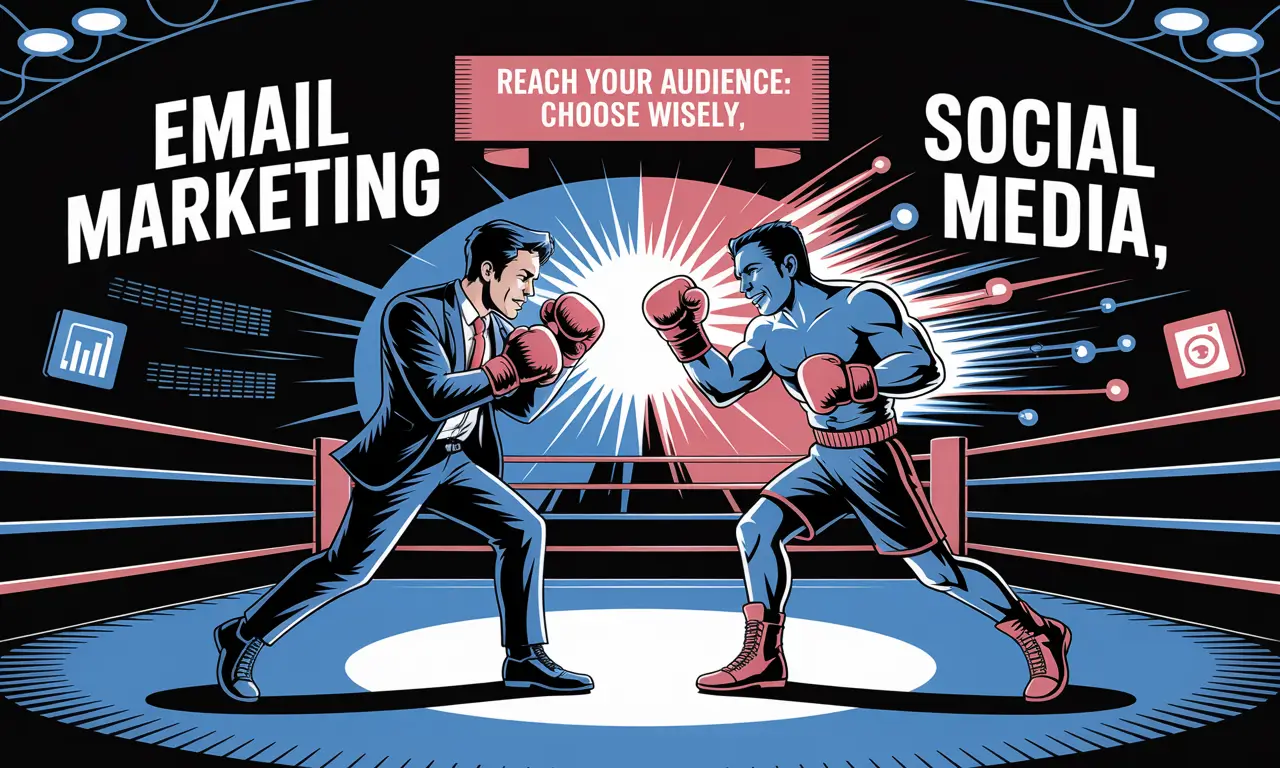Email marketing: direct and measurable
Email gives you a direct line to people who already know you. Lists are made up of subscribers, past buyers, or people who signed up for updates. Messages land in their inbox rather than being lost in a fast-moving feed.
Strengths of email
- Ownership: you control your list and are not at the mercy of an algorithm.
- Targeting: segment by purchase history, location, or interest.
- Measurable: track opens, clicks, conversions, and revenue easily.
- Low cost: sending to a list of 1,000 can cost under £20 a month using mainstream platforms.
Limits of email
- Building a good list takes time and effort.
- Inbox competition is high, so subject lines and timing matter.
- Messages can hit spam folders if list hygiene is poor.
Social media: broad reach and brand building
Social platforms like Facebook, Instagram, TikTok, and LinkedIn help you find new audiences and keep your brand visible. Posts can spread widely if shared or promoted, and they allow rich formats such as video and stories.
Strengths of social
- Reach: find people who have never heard of you.
- Engagement: two-way interaction through comments, likes, and shares.
- Visual formats: video, carousels, reels, and stories showcase products and people.
- Targeted ads: precise filters by age, interest, job role, or location.
Limits of social
- Organic reach has dropped; many posts only reach a fraction of followers.
- Algorithms change often, reducing consistency.
- Ads require steady spend and can be competitive.
- Tracking purchases can be harder than with email if set up is weak.
Which channel drives more sales?
For UK small businesses, email marketing usually converts at a higher rate once you have a solid list. Studies often show average email ROI at £30–£35 per £1 spent. Social media marketing tends to have lower direct conversion but plays a strong role in awareness and early-stage engagement.
In short: email drives higher sales per pound spent, while social helps you find and nurture new audiences.
How the two channels work best together
- Use social ads and posts to grow your email list with lead magnets, free trials, or discounts.
- Retarget social ads to people who clicked links in your emails.
- Share email content on social for wider reach, then use email for deeper offers.
- Run joint campaigns, such as a launch teased on social then pushed to email for conversion.
Channel choice depends on your stage
- New business: start with social to reach new people, then focus on building an email list as soon as possible.
- Established business: rely on email to drive repeat sales and steady revenue, using social to bring in fresh leads.
- Low-budget business: focus on consistent email output, as the cost per sale is often lower.
Summary and next step
Email and social are not rivals but partners. Email is the stronger channel for direct sales and predictable ROI. Social builds reach, brand, and list growth. The best marketing channel for your UK small business is the one that matches your current stage, budget, and goals.
Next step: review your last three months of sales data. Check which channel drove more conversions, then adjust your balance of effort and spend. Aim to run both in tandem, with email as the conversion engine and social as the reach driver.


